
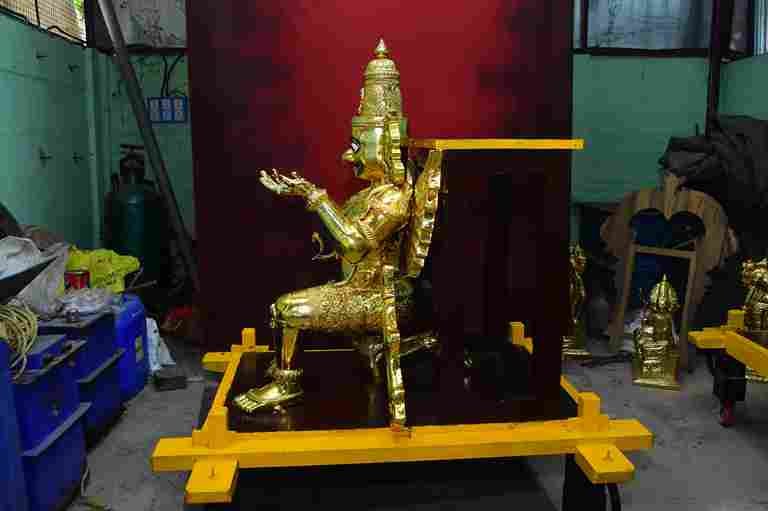
Garuda Vahanam
Garuda Vahanam refers to the divine vehicle (vahanam) of Lord Vishnu, which is Garuda, the mighty eagle. In Hindu mythology, Garuda is a celestial bird known for its immense strength and speed, and it serves as the mount of Lord Vishnu. The Garuda Vahanam festival is a grand celebration in temples, particularly those dedicated to Lord Vishnu, during which the idol of the deity is carried on a procession with Garuda as the vahanam.
The festival usually involves the idol of Lord Vishnu being placed on a specially decorated Garuda statue or platform, and the procession is accompanied by devotional music, chanting, and prayers. It is often celebrated on special occasions like Vaikuntha Ekadashi or during the Brahmotsavam festival.
Mayil Vahanam
Mayil Vahanam refers to the divine vehicle (vahanam) of Lord Muruga, which is the peacock (Mayil in Tamil). Lord Muruga, also known as Subramanya, is a popular deity in Hinduism, especially in South India, and is the god of war, wisdom, and victory. His mount, the peacock, is a symbol of beauty, grace, and strength.
The Mayil Vahanam procession is a part of various festivals dedicated to Lord Muruga, especially during his annual Kartikeya celebrations, Skanda Shasti, and Thai Poosam. The procession involves the deity’s idol being carried on a beautifully decorated peacock or peacock-shaped chariot, accompanied by devotees chanting hymns, singing devotional songs, and offering prayers.
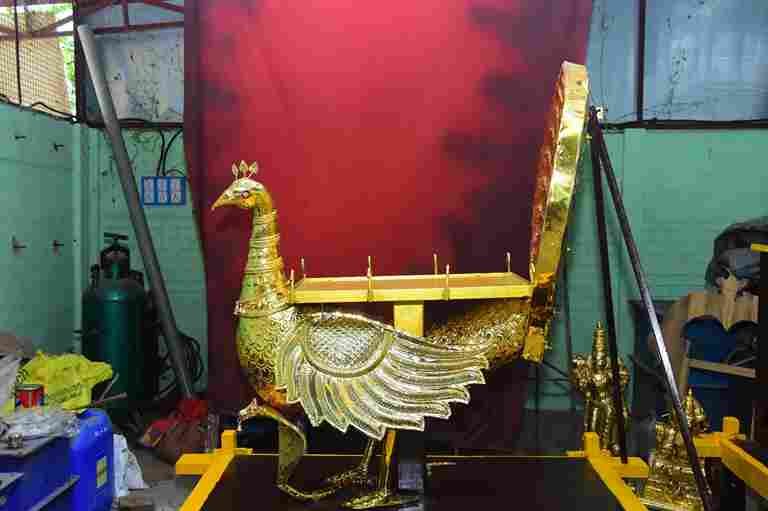
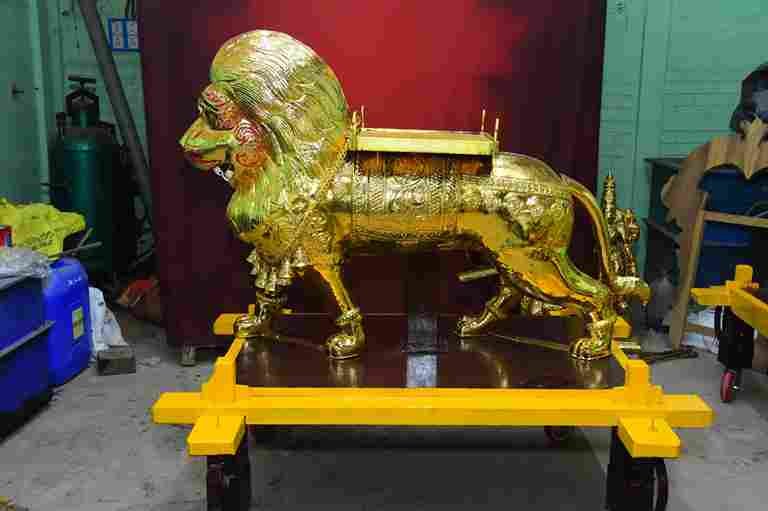
Simma Vahanam
Simma Vahanam refers to the lion (Simma in Sanskrit and Tamil) as the divine vehicle (vahanam) of Goddess Durga or Lord Narasimha. The lion is a symbol of power, courage, and royalty, and it is considered one of the most powerful creatures in Hindu mythology. In Hindu temples, especially those dedicated to Goddess Durga or Lord Narasimha, the Simma Vahanam procession is a major event during religious festivals like Navaratri, Durga Puja, or Vaikuntha Ekadashi.
During this festival, the idol of the deity, often Goddess Durga or Lord Narasimha, is placed on a lion-shaped chariot or a platform designed to resemble a lion, and the procession takes place with devotees chanting prayers, singing hymns, and offering their devotion. The event symbolizes the strength, courage, and fierce determination of the deity, bringing spiritual empowerment to the devotees.
Yanai Vahanam
Yanai Vahanam refers to the elephant (Yanai in Tamil) as the divine vehicle (vahanam) of Lord Ganesha, the remover of obstacles and the god of beginnings and wisdom, or other deities like Lord Indra in some contexts. Elephants are highly revered in Hinduism due to their wisdom, strength, and royal symbolism. The Yanai Vahanam procession takes place during major temple festivals, especially those dedicated to Lord Ganesha, such as Vinayaka Chaturthi and Brahmotsavam in South India.
The deity’s idol is carried on an elaborate chariot or platform designed to resemble or represent an elephant, and the procession is accompanied by chanting, music, and prayers. The event is highly symbolic, conveying divine strength, wisdom, and the peaceful nature of the elephant.
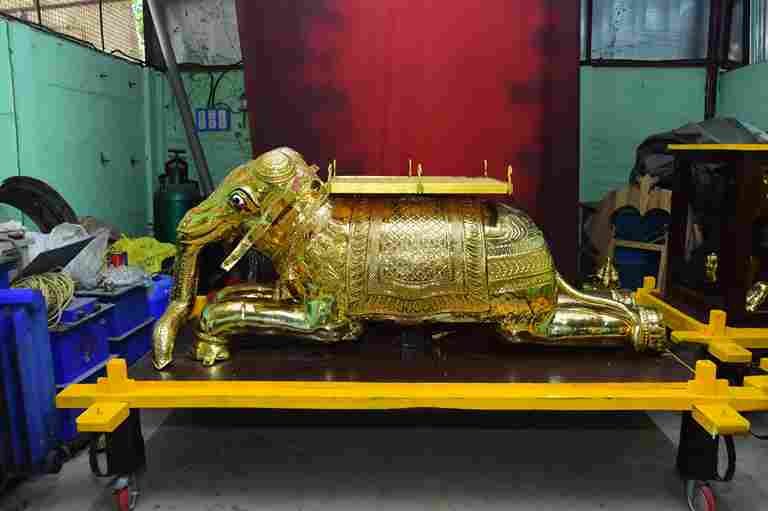

Mooshika Vahanam
Mooshika Vahanam refers to the mouse (Mooshika in Sanskrit and Tamil) as the divine vehicle (vahanam) of Lord Ganesha, the Hindu god of wisdom, remover of obstacles, and patron of arts and learning. In this context, Lord Ganesha, who is often depicted with the head of an elephant, rides a mouse, which is also called Mooshika in Sanskrit.
The Mooshika Vahanam procession is an important event during temple festivals dedicated to Lord Ganesha, especially during Vinayaka Chaturthi, Brahmotsavam, and other important celebrations. The idol of Lord Ganesha is placed on a chariot or platform designed to represent a mouse, and the procession is accompanied by chants, prayers, and music.
Reach out today to organize authentic temple rituals, festivals, and installations—professionally managed with devotion, tradition, and care.
Connect With Us for Divine Temple Services
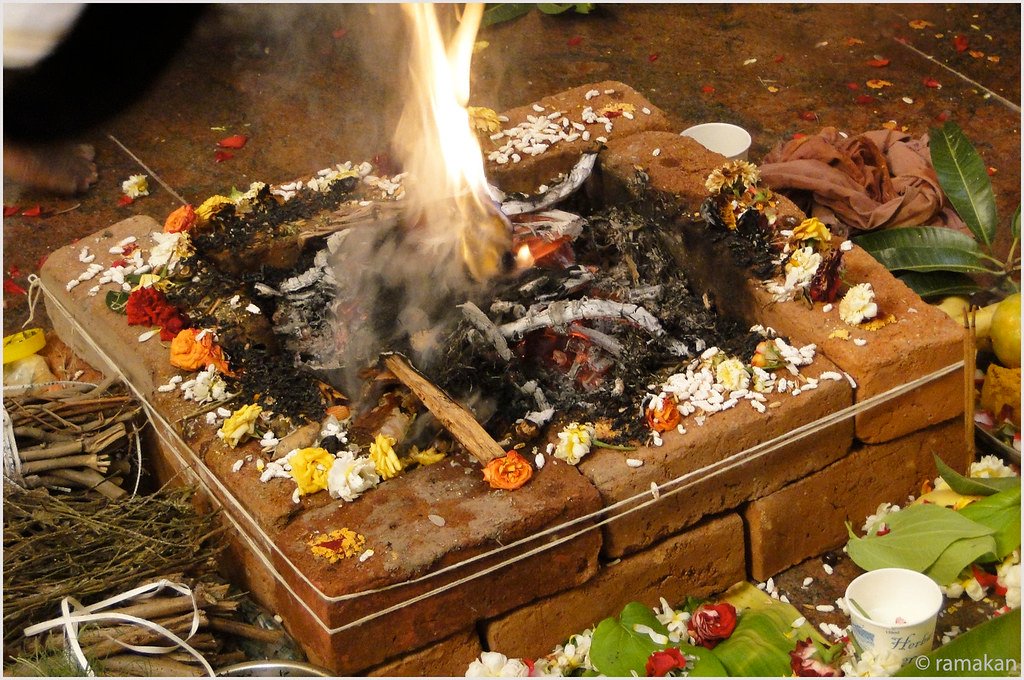
Contact Details
- Old No. 19 / New No. 40, Padmanaban Street (Mudukkutheru), Kumbakonam - 612001
-
+91- 93675 67801
+91- 63744 09369 - chakraraja9@yahoo.com
Copyright ©️ 2025 Chakraraja. All Rights Reserved Designed by Wink Dezign
